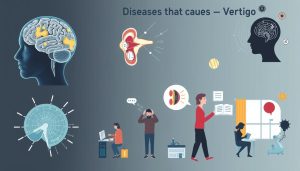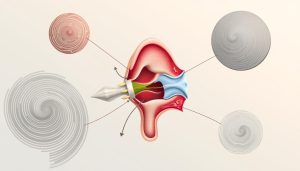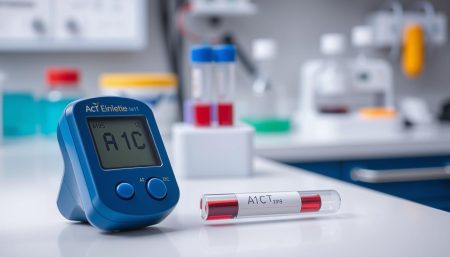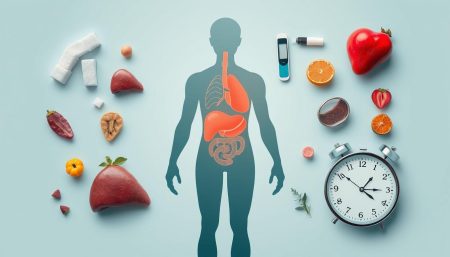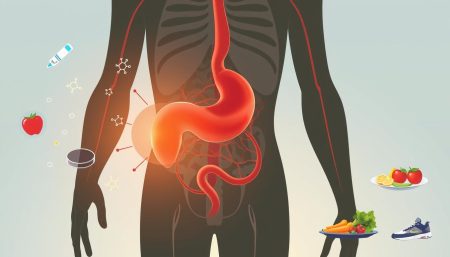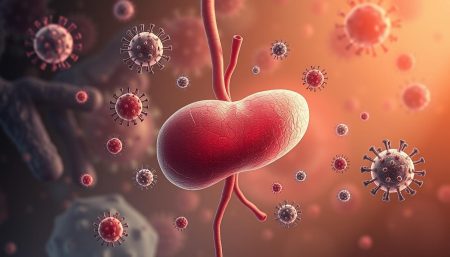Understanding type 2 diabetes mellitus symptoms is key for millions worldwide. Knowing diabetes signs can help manage the condition better. Symptoms like unusual fatigue and more bathroom trips are signs of high blood sugar.
Finding diabetes early can prevent serious health issues. These include heart disease, kidney damage, and vision problems. So, it’s important to notice small changes in your body.
Managing diabetes starts with knowing its symptoms. Let’s explore these signs together. This way, we can take charge of our health and fight type 2 diabetes mellitus.
Understanding Type 2 Diabetes Mellitus
Type 2 diabetes mellitus is becoming more common worldwide. It is mainly caused by insulin resistance and elevated blood sugar. This condition makes it hard for the body to control glucose levels. It also makes diabetes management a big challenge.
Insulin is a key hormone made by the pancreas. It helps glucose enter cells. In type 2 diabetes, cells don’t respond well to insulin, leading to insulin resistance. Even though the pancreas makes more insulin, it’s not enough to keep glucose levels normal.
- Reduction of sugar spikes in the bloodstream
- Improvement in overall blood sugar levels over time
- Enhanced ability of cells to use glucose with improved insulin sensitivity
Starting with basic steps in diabetes management can help a lot. Changing your diet, staying active, and taking your medicine as told are key.
| Factor | Impact on Insulin Resistance | Management Strategy |
|---|---|---|
| Diet | High-sugar diets can worsen insulin sensitivity | Adopt a balanced diet with low glycemic index foods |
| Exercise | Regular physical activity enhances insulin sensitivity | Integrate routine aerobic and resistance training exercises |
| Medication | Medications can help manage blood glucose levels effectively | Maintain consistent medication adherence as prescribed |
Learning about type 2 diabetes mellitus is important. It’s not just about controlling elevated blood sugar or fighting insulin resistance. It’s about making choices that improve your health for the long term.
Recognizing Early Signs of Type 2 Diabetes
Spotting the early signs of diabetes is key to managing this common condition. At first, symptoms might be slight but grow more noticeable over time. They can impact your daily life and health.
Increased Thirst and Frequent Urination
Excessive thirst and frequent urination are clear signs of diabetes. High blood sugar makes kidneys work harder. They can’t filter all the glucose, so it goes into urine. This pulls water from your body, making you thirsty and needing to pee more.
Excessive Hunger and Weight Fluctuations
Feeling very hungry or losing weight without trying can also be a sign. Unexplained weight loss and increased hunger mean your body can’t use glucose right. It starts breaking down muscle and fat for energy, causing weight loss.
- Fatigue from not enough sugar in cells.
- Mood swings, like irritability, from blood sugar changes.
- Blurred vision from fluid changes in the eyes, affecting focus.
Knowing these early signs is vital for catching diabetes early. This can help prevent serious problems. Early treatment can greatly reduce the risk of diabetes complications.
The Impact of High Blood Sugar Levels
High blood sugar is a big health worry, mainly for those with diabetes. It’s key to know the long-term risks of elevated blood sugar to avoid serious problems.
Long-Term Risks of Elevated Blood Sugar
High blood sugar can cause serious issues like kidney failure, heart disease, and nerve damage. It also makes it harder for the body to heal, leading to infections and slow-healing wounds.
The Glycemic Index and Blood Sugar Management
The glycemic index is key for managing blood sugar. It shows how fast foods raise blood sugar. Foods with a lower index are better for keeping blood sugar stable.
To keep blood sugar in check, eat foods with a low to moderate glycemic index. Good choices include whole grains, legumes, and most fruits and veggies. It’s not just about what you eat, but how you pair it to keep blood sugar stable.
Managing diabetes holistically means looking at insulin, hormones, and nutrition too. These factors are vital for health, including hair health, when you have diabetes.
| Food | Glycemic Index |
|---|---|
| Apple | 36 |
| Lentils | 32 |
| Oatmeal | 55 |
| White Bread | 75 |
Identifying Type 2 Diabetes Mellitus Symptoms
Spotting diabetes early is key to managing it well. Knowing the symptoms of type 2 diabetes helps in catching it early. This way, you can get medical help quickly. Let’s look at some common diabetes warning signs.
Feeling very thirsty and hungry, even after eating, are signs of type 2 diabetes. Feeling tired a lot is another common symptom. Blurred vision and needing to pee a lot also mean you should get checked for diabetes.
- Frequent urination, often at night
- Sudden weight gain or loss
- Increased thirst and dry mouth
- Feeling very hungry even after eating
- Fatigue and irritability
- Blurred vision
- Slow healing of cuts and wounds
- Numbness or tingling in hands and feet
The table below shows how early diabetes warning signs differ. It helps in spotting diabetes quickly.
| Symptom | Occurrence Frequency | Potential Severity |
|---|---|---|
| Frequent Urination | Often | Moderate |
| Increased Thirst | Very Often | High |
| Blurred Vision | Sometimes | Moderate to High |
| Fatigue | Often | Moderate |
| Weight Fluctuations | Occasionally | Mild to Moderate |
Knowing these diabetes warning signs and symptoms of type 2 diabetes is important. It helps in catching diabetes early and managing your health better. If you notice any of these symptoms, see a doctor for a check-up and possible diagnosis.
Link Between Insulin Resistance and Type 2 Diabetes
Understanding insulin resistance is key to preventing diabetes. This condition makes it hard for cells to use glucose from the blood. It’s a step towards type 2 diabetes.
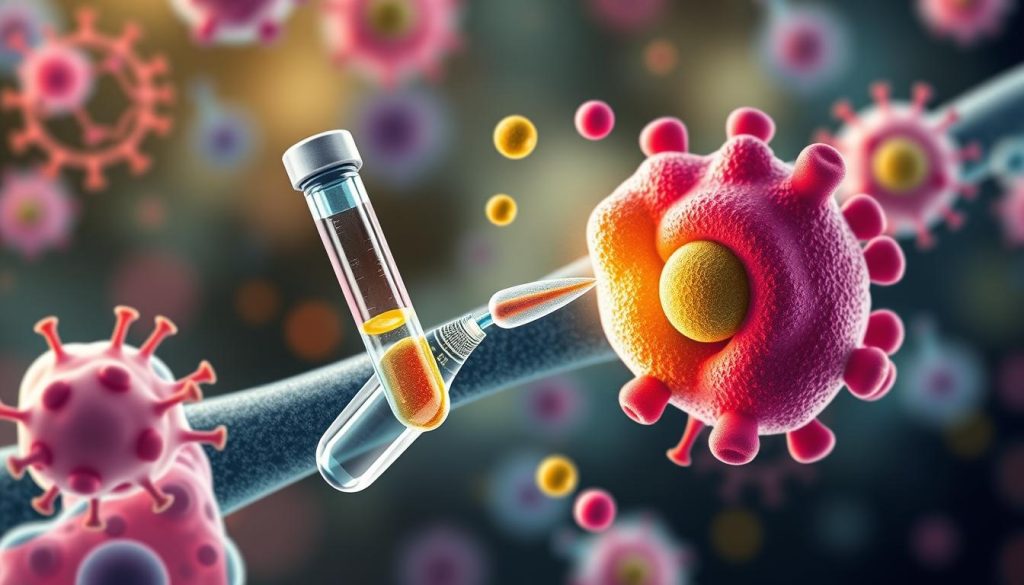
Insulin resistance builds up over years. It’s shaped by diet, lifestyle, and genes. Knowing this helps in stopping or slowing down diabetes.
- Regular physical activity improves insulin sensitivity.
- A balanced diet rich in fiber and low in processed foods can mitigate the risk significantly.
- Maintaining a healthy body weight has been shown to reduce insulin resistance by improving how cells respond to insulin.
Studies show that taking care of your health can prevent or delay diabetes. Early changes in diet and lifestyle are very effective. They help fight insulin resistance and prevent diabetes.
Excessive Thirst as a Signal of Diabetes
Feeling excessive thirst can be a first sign of diabetes, known as polydipsia. This happens because of high blood sugar. It makes the kidneys work harder to filter out the extra glucose.
When the kidneys can’t keep up, the body gets rid of the glucose through more urine. This leads to dehydration in diabetes. So, the cycle of thirst gets worse.
In people with diabetes, polydipsia and dehydration are more than just discomforts. They are signs that the body needs help with blood sugar levels. Catching these symptoms early can lead to better medical care and ways to manage the disease.
To understand how thirst relates to diabetes, look at the table below. It shows how normal hydration differs from diabetic polydipsia:
| Condition | Daily Water Intake | Additional Symptoms |
|---|---|---|
| Normal Hydration | 2-3 Liters | N/A |
| Diabetic Polydipsia | 4-10 Liters | Frequent urination, dry mouth |
It’s important to notice early signs like excessive thirst to take care of your health. Regular doctor visits and keeping an eye on your hydration are key to managing or preventing diabetes.
Exploring the Causes of Frequent Urination
Frequent urination can be a worrying sign for many, pointing to health issues. For people with diabetes, this symptom is common. It’s linked to changes in the body, like diabetes and dehydration, and how diabetes affects the kidneys.
Dehydration and Kidney Function in Diabetes
Dehydration often goes hand in hand with diabetes, mainly because of the need to pee more. High blood sugar makes the kidneys work hard to get rid of extra glucose in urine. This process uses a lot of water, causing more trips to the bathroom.
It can also harm kidney function over time. If not handled well, dehydration can lead to long-term kidney problems.
The Urinary System’s Response to High Blood Sugar
When blood sugar is high, the body’s urinary system works extra hard. The kidneys filter blood, remove extra glucose, and get rid of it in urine. This is called glycosuria.
This hard work means more trips to the bathroom, which is common in diabetes that’s not well-managed. The kidneys can get damaged over time, showing how important it is to keep blood sugar in check.
Knowing how frequent urination, diabetes, dehydration, and kidney issues are connected helps manage symptoms better. It also helps prevent serious problems. Keeping an eye on blood sugar, drinking enough water, and getting advice from doctors are key steps for those dealing with these symptoms.
Unexplained Weight Loss and Type 2 Diabetes
Unexplained weight loss can be a sign of a serious health issue, like Type 2 diabetes. It’s important to understand how this symptom relates to managing diabetes. Sudden weight loss without trying can be a warning sign.
When the body can’t use insulin well, glucose builds up in the blood. This makes the body use fat and muscle for energy, causing weight loss. Knowing this can help diagnose diabetes early and manage weight better.
| Sign | Impact on Health | Relevance to Diabetes |
|---|---|---|
| Unexplained Weight Loss | Loss of muscle mass and overall body strength | Indicator of insufficient insulin function |
| Increased Hunger | Compensatory response to energy deficit | Occurs as body seeks more fuel due to improper glucose use |
| Fatigue | Reduced physical and mental energy levels | Result of inadequate glucose processing |
To tackle unexplained weight loss in diabetes, changing your diet and checking blood sugar often is key. Seeing this symptom as part of diabetes symptoms helps catch problems early. Don’t ignore sudden weight changes. They’re important signs your body needs medical attention and a possible change in diabetes care.
The Significance of Slow Wound Healing
For people with diabetes, wounds heal slower because of high blood sugar. This can cause more problems, making it important to manage wounds well and watch for infections.
Immune Response and Blood Glucose Levels
High blood sugar weakens the immune system. This makes it harder for wounds to heal in diabetics. The body can’t fight off bacteria as well, raising the chance of infections and more diabetes problems.
Monitoring Wounds for Infection Prevention
Keeping wounds clean is key to avoiding infections in diabetics. Patients and doctors should watch for signs like redness, swelling, or pain. Keeping the wound area clean and protected is also important to stop harmful germs.
- Maintain strict hygiene around the wound area to reduce the risk of infection.
- Use recommended antiseptic solutions and dressings to provide a barrier against bacteria.
- Keep blood glucose levels well-controlled to support overall immune function and facilitate quicker healing.
- Consult health professionals promptly if signs of infection or delayed healing are observed.
By following these steps, people with diabetes can lower the risks of slow wound healing. This helps improve their health overall.
Vision Issues: From Blurriness to Diabetes Complications
Diabetes affects more than just blood sugar levels. It can cause serious vision health problems, from blurred vision to severe diabetes eye complications. Catching these symptoms early can stop permanent damage and keep your life quality high.
Blurred vision is often the first sign of bad glucose control. High blood sugar makes the eye lens swell, making it hard to see. Quick action to manage blood sugar can often fix the problem.
But, ignoring high blood sugar can lead to worse diabetes eye complications. These include diabetic retinopathy, cataracts, and glaucoma. Diabetic retinopathy, for example, can cause blindness if not treated early. So, regular eye checks are key for those with diabetes.
| Eye Condition | Description | Connection to Diabetes |
|---|---|---|
| Diabetic Retinopathy | Damage to the blood vessels in the retina. | Caused by high blood sugar levels. |
| Cataracts | Clouding of the eye’s lens. | Diabetes increases the risk of earlier development and rapid progression. |
| Glaucoma | Increased pressure in the eye, leading to optic nerve damage. | Diabetes doubles the risk of developing this condition. |
To keep your vision health safe, people with diabetes should get a full eye exam every year. They might need more often if their doctor says so. Early screenings can spot problems early, allowing for quick treatment.
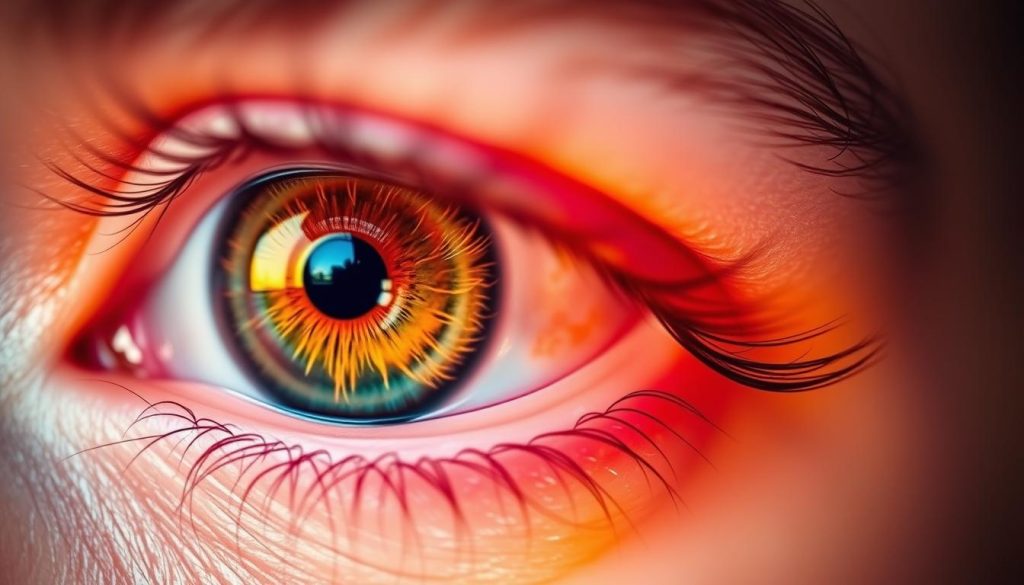
Fatigue: A Common Symptom of Diabetes
Fatigue is a common issue for those with diabetes. It shows how diabetes affects energy levels and health. Knowing how blood sugar changes cause fatigue helps manage it better.
Energy Management and Blood Sugar Control
Keeping blood sugar levels in check is key to energy balance in diabetes. High or low blood sugar can cause lasting fatigue. This affects daily life and quality of life. Here are some tips to help:
- Regular blood glucose monitoring to detect patterns leading to energy drops.
- Maintaining a balanced diet to ensure steady energy supply.
- Regular physical activity to enhance insulin sensitivity and energy utilization.
Recognizing Fatigue and its Underlying Causes
Finding the cause of fatigue is the first step in managing diabetes. Fatigue can come from blood sugar changes, mental health, sleep, or other health issues.
| Aspect | Impact on Fatigue | Management Strategy |
|---|---|---|
| Blood Sugar Levels | Variability can cause mental and physical exhaustion. | Use a blood glucose monitor to track and maintain. |
| Diet | Poor diet can lead to nutrient deficiencies influencing energy levels. | Structure meals with a balance of macronutrients and micronutrients. |
| Sleep Quality | Disrupted sleep can exacerbate fatigue. | Adhere to a consistent bedtime routine and optimize sleep environment. |
| Exercise | Lack of physical activity can decrease energy efficiency. | Engage in regular, moderate exercises like walking or cycling. |
By tackling these areas, people can boost their energy with diabetes and fight fatigue. Each step helps manage diabetes symptoms and boosts overall health. With careful monitoring and lifestyle changes, it’s possible to live more fully and manage diabetes better.
Peripheral Neuropathy and Sensation Changes
Peripheral neuropathy is a common issue from diabetes nerve damage. It makes it hard for the body to feel temperature, texture, and pain, mainly in the hands and feet. High blood sugar can harm the nerve fibers, causing sensation changes in diabetes. People often feel numbness, tingling, or a burning sensation in their extremities.
This nerve damage takes time to develop, happening with long-term high blood sugar. It’s important for those with diabetes to know about peripheral neuropathy. This knowledge helps keep their quality of life high and prevents more problems.
- Regularly check blood sugar levels to avoid high blood sugar for a long time. This helps prevent or slow peripheral neuropathy.
- Take good care of your feet. Look for new wounds or changes in sensation, as numbness can hide these issues.
- See your healthcare provider for help with pain management and treatments to ease symptoms.
Being aware and taking action early is key to avoiding the serious effects of sensation changes in diabetes. It’s important to have a routine that includes careful monitoring and specific care. This helps manage peripheral neuropathy effectively.
The Relationship Between Diabetes and Skin Conditions
Diabetes affects the body in many ways, including the skin. People with diabetes face a higher risk of skin problems. This is because their blood sugar levels can make it hard for the skin to heal and fight off infections. Knowing about these skin issues and taking good care of your skin can help avoid serious problems.
Identifying Diabetes-Related Skin Issues
There are several skin problems that can signal diabetes or poor blood sugar control. These can range from dry, itchy skin to serious infections like fungal or bacterial ones. Spotting these signs early is key for quick and effective treatment. Here are some common skin problems linked to diabetes:
- Acanthosis nigricans: This is dark, velvety patches in body folds and creases.
- Diabetic dermopathy: It looks like age spots but is actually light brown, scaly patches.
- Necrobiosis lipoidica diabeticorum: It causes shiny, hard patches that can be reddish or yellowish.
Importance of Skin Care in Diabetes Management
Keeping your skin moist and healthy is key in managing diabetes. High blood sugar can dry out the skin, leading to cracks, infections, and slow healing. Here are some tips for good skin care in diabetes:
- Drink plenty of water to keep your skin elastic and moist.
- Choose gentle, diabetes-friendly skincare products to avoid irritation.
- Check your skin often for new or worsening issues, and see a doctor if needed.
Having a good skin care routine and knowing about diabetes skin issues can help people with diabetes stay healthy. It also helps them manage their condition better.
Managing Type 2 Diabetes Symptoms
Managing diabetes well means making big lifestyle changes. Focusing on diet and exercise can greatly improve your life and control symptoms. These steps are key to managing blood sugar and preventing serious problems.
Lifestyle Modifications for Better Blood Sugar Control
Changing your lifestyle is key to managing diabetes. This includes changing your diet and how much you exercise, as well as getting enough sleep and managing stress. Making these changes can help keep your blood sugar stable and improve your long-term health.
Diet and Exercise: Cornerstones of Diabetes Management
Diet and exercise are essential for managing diabetes. Eating a balanced diet that’s low in fat and moderate in calories is important. Exercise also boosts insulin sensitivity, which helps control blood sugar levels.
| Dietary Components | Benefits | Recommended Intake |
|---|---|---|
| High-fiber foods | Helps control blood sugar levels | 25-30 grams per day |
| Lean Proteins | Supports muscle growth and repairs tissue | 46-56 grams per day |
| Healthy Fats | Reduces LDL cholesterol, improves heart health | 20-30% of daily calories |
| Fresh Vegetables and Fruits | Provides essential vitamins and minerals | 5-9 servings per day |
By making these lifestyle changes, including following a strict diet and staying active, you can see big improvements. These changes can help not just your blood sugar levels but your overall health too.
When to Consult a Healthcare Provider
Understanding and tracking Type 2 Diabetes Mellitus symptoms can be done on your own. But, getting medical advice from a healthcare provider is key to managing the disease. If your symptoms change or your blood sugar levels stay high, you should talk to diabetes specialists. They can help adjust your treatment plan to better control your condition.
Healthcare providers do more than just diagnose and start treatment. They help manage diabetes over time. They can change your medication, suggest diet and exercise, and teach you about blood sugar monitoring and insulin use. Regular check-ups are important for catching and treating complications early, which is essential for long-term care.
If you have symptoms of diabetes complications, like bad vision, frequent infections, or slow wound healing, see a doctor right away. This can stop your health from getting worse. Knowing how to manage your diabetes with professional help is important for living well with Type 2 Diabetes Mellitus.
FAQ
Q: What are the most common symptoms of Type 2 Diabetes Mellitus?
A: Symptoms include frequent urination and excessive thirst. You might also lose weight without trying, have slow healing wounds, blurred vision, and feel tired. Knowing these signs is key to catching diabetes early.
Q: How does insulin resistance contribute to Type 2 Diabetes Mellitus?
A: Insulin resistance means your body’s cells don’t use insulin well. This raises your blood sugar levels. High blood sugar is a main sign of Type 2 Diabetes and can lead to serious health issues if not managed.
Q: Why is excessive thirst a warning sign of diabetes?
A: Thirst is a sign of diabetes because your body tries to dilute the extra glucose in your blood. This makes you feel thirsty.
Q: How does Type 2 Diabetes cause frequent urination?
A: Your kidneys try to get rid of extra glucose by making urine. This leads to needing to urinate a lot, known as polyuria.
Q: Can unexplained weight loss be a symptom of diabetes?
A: Yes, diabetes can cause sudden weight loss. This happens because your body uses fat and muscle for energy when it can’t use glucose.
Q: What is the connection between diabetes and slow wound healing?
A: High blood sugar can slow down blood flow to wounds. This means less nutrients and oxygen, making wounds heal slower.
Q: How does diabetes affect vision?
A: High blood sugar can damage blood vessels in the retina. This can cause blurred vision and other vision problems, like diabetic retinopathy.
Q: Why does diabetes lead to fatigue?
A: Fatigue in diabetes comes from blood sugar swings, not enough insulin, and the stress of managing the disease.
Q: What is peripheral neuropathy and its relation to diabetes?
A: Peripheral neuropathy is nerve damage from high blood sugar. It affects nerves in your hands and feet, causing numbness or pain.
Q: Can Type 2 Diabetes affect the skin?
A: Yes, diabetes can cause skin problems like infections, dry skin, and poor circulation. Keeping blood sugar in check can help prevent these issues.
Q: What lifestyle changes are recommended to manage Type 2 Diabetes symptoms?
A: Eat a balanced diet, exercise regularly, keep a healthy weight, and check your blood sugar often. These changes help manage diabetes symptoms and prevent complications.
Q: When should someone with Type 2 Diabetes symptoms consult a healthcare provider?
A: See a healthcare provider if you notice diabetes symptoms, changes in your condition, or need help with managing your diabetes.




